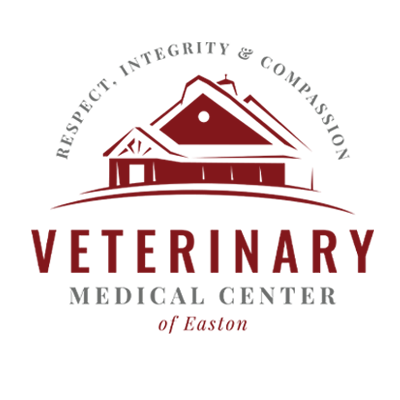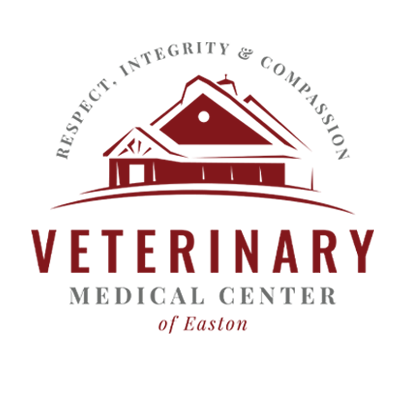Congratulations on your new puppy!
We are eager to meet the newest member of your family so we may welcome him or her into our family.
save 30% with our puppy wellness plaN
Everything your new best friend needs in their first year! Enroll in this plan and receive 30% OFF your pet’s spay and neuter package – available only while your plan is active. (Payment is due on the day of surgery. Excludes dogs over 24 months.)
Wellness Plan includes:

- All recommended wellness exams for the first year
- One non-routine exam – for unexpected needs
- Core vaccines, including: Rabies, DA2PP, Leptospirosis
- Fecal parasite screening
- Unlimited nail trims — for puppies — helping your pet get comfortable with paw handling early on so nail trims are stress-free later in life!
- Discussion of heartworm disease & intestinal parasite prevention products
-
Comprehensive Preventative Care
Our plans are designed to catch issues early, giving your pet the best chance at a long, healthy life.
-
Significant Cost Savings
Bundled services at a discounted rate save you hundreds compared to individual visits.
-
Customized for Life Stages
From puppy to senior, our plans are tailored to meet your pet’s evolving health needs.
-
Simplified Scheduling
Stay on top of your pet’s health with built-in appointment reminders and easy-to-follow care timelines.
-
Peace of Mind
You’ll know your pet is getting everything they need, right when they need it. Enroll Today!
BONUS FOR ALL PLANS: Heartworm & flea preventive – all pets get 10% off when purchased in the clinic!
Your puppy’s First Wellness Exam
This wellness exam will include thorough “nose-to-tail” physical evaluations and allow us to establish an individualized wellness care plan for your puppy. The first few visits will allow you to develop a relationship with us, allow our veterinarians to complete your puppy’s vaccination series, start your puppy on heartworm medication, begin parasite prevention and monitor any developing medical or behavioral conditions your puppy may develop.
this wellness exam will include:
- • Comprehensive physical exams
- • Fecal analysis (intestinal parasite screening)
- • Deworming
- • Development of an immunization protocol based on your puppy’s individual needs
- • Vaccinations, depending on your puppy’s age, vaccination schedule and health history
- • Discussion of heartworm disease & intestinal parasite prevention products
- • Recommendations for flea & tick prevention
- • Nutritional counseling
- • Behavior discussion and house training recommendations
- • Recommendations for spay, neuter or responsible breeding
- • Description of a lifelong preventive health care plan
- • Recommendations and options for veterinary insurance and wellness plans
Canine Core Vaccines
Distemper (DA2PP) and Rabies
The Distemper Vaccine is a multi-component vaccine. It is given to puppies starting at 8-9 weeks of age; an exam and booster vaccine are done every 3-4 weeks until 16-17 weeks of age. This frequent vaccine administration is necessary to keep puppies protected as the maternal antibodies disappear. Large breed, black/tan dogs should receive the last booster at 17-18 weeks of age because of their increased susceptibility to parvovirus. This vaccine is boosted the following year, and then given every 3 years. The vaccine protects against the following viruses:
Distemper is a widespread virus and is often fatal. This virus attacks the respiratory tract, gastrointestinal tract, skin and central nervous system. All dogs should be vaccinated for distemper, as all ages are susceptible.
Canine adenovirus can cause respiratory disease and hepatitis, and can be fatal. This viral infection is rare now because of immunizations.
Parvovirus is a widespread, sometimes fatal disease which causes severe dehydration, diarrhea and vomiting in dogs, especially younger pups and unvaccinated dogs.
Parainfluenza is a viral cause of infectious tracheobronchitis (ITB) or kennel cough. It is often a mild respiratory infection in otherwise healthy dogs.
For mature patients at risk to vaccine reactions or who have immune diseases, a vaccine antibody titer for distemper and parvovirus can be done yearly in lieu of the vaccine, starting after the one-year booster vaccine. This does not apply to puppies.
The Rabies Vaccine is first given at 12-16 weeks of age. The booster vaccine is given at 1 year; thereafter it is administered every 3 years. Rabies is a lethal virus to all mammals, including people. It is prominent in wildlife of the eastern shore, so all dogs should be vaccinated. This vaccine is required by Maryland law for all dogs 12 weeks of age and older.
For commonly asked questions about vaccination visits: https://www.avma.org/KB/Resources/FAQs/Pages/Vaccination-FAQs.aspx
Leptospirosis
Leptospirosis (lepto) is a bacterial disease that can affect both humans and animals, often leading to serious liver and kidney complications—and in some cases, death. The infection spreads through contact with contaminated water, urine, or infected wildlife such as raccoons, skunks, opossums, and rodents.
Protecting your dog starts with vaccination: two initial doses given about three weeks apart, followed by yearly boosters. This schedule helps reduce the risk of infection and supports your pet’s long-term health.

Internal and External Parasite Prevention
Heartworms
A heartworm (Dirofilaria immitus) is a large spaghetti-like worm that lives in the heart and lungs of infected dogs and causes heart/respiratory failure. The lifecycle of the heartworm is 6-8 months. Immature larvae are spread to dogs through a mosquito bite. It takes 6-8 months for the larvae to reach adulthood and produce microfilaria, the first stage larvae that are ingested by the mosquito. The life-cycle starts again when the mosquito bites another dog.
The Heartworm test should be done yearly, starting at 6 months to 1 year of age.
For information on Heartworm disease in dogs visit: https://www.avma.org/public/PetCare/Pages/Heartworm-Disease.aspx
Intestinal Parasites
ALL dogs are susceptible to intestinal parasites, including roundworms, hookworms, tapeworms, whipworms, giardia, and coccidia. These parasites can cause malnutrition, anemia, gastrointestinal, and respiratory problems. A small, thumbnail size fresh stool sample is required for testing.
Fecal testing: A centrifuged fecal sample is recommended at the first several visits for all puppies and annually for adults to test for intestinal parasites. Many intestinal parasites shed eggs or cysts intermittently, which may result in a false negative stool sample. For this reason, puppies are dewormed at least twice to treat roundworm and hookworm infections.
External Parasites
Common external parasites on the Eastern Shore include fleas, multiple species of ticks, ear mites, and skin mites. These parasites can be debilitating for all pets, casing skin rashes and often severe discomfort. Fleas and ticks can also transmit serious infections, including Lyme disease, and protozoan infections like Ehrlichia and Anaplasma.
For information on external parasites visit: https://www.avma.org/public/PetCare/Pages/externalparasites.aspx
External Parasite Preventative: Many different types of oral and topical medications and flea collars are available for dogs to prevent fleas, ticks and ear mites. We recommend topical Frontline Plus or oral Nexgard. Talk with the veterinarian to see what medication is best for your pet. Remember even animals indoors are affected by parasites, especially fleas.
Internal Parasite Preventative: All puppies should be started on heartworm disease preventative at 8-12 weeks of age. The dosage will be adjusted for weight as your puppy grows. The heartworm tablet is actually treating the early stage of heartworm infection, by killing the L3 stage larvae spread by the mosquito. We recommend Interceptor Plus or Heartgard as heartworm/intestinal parasite disease preventative. These are systemic medications that kill the immature larval heartworms, and the adult intestinal parasites.




